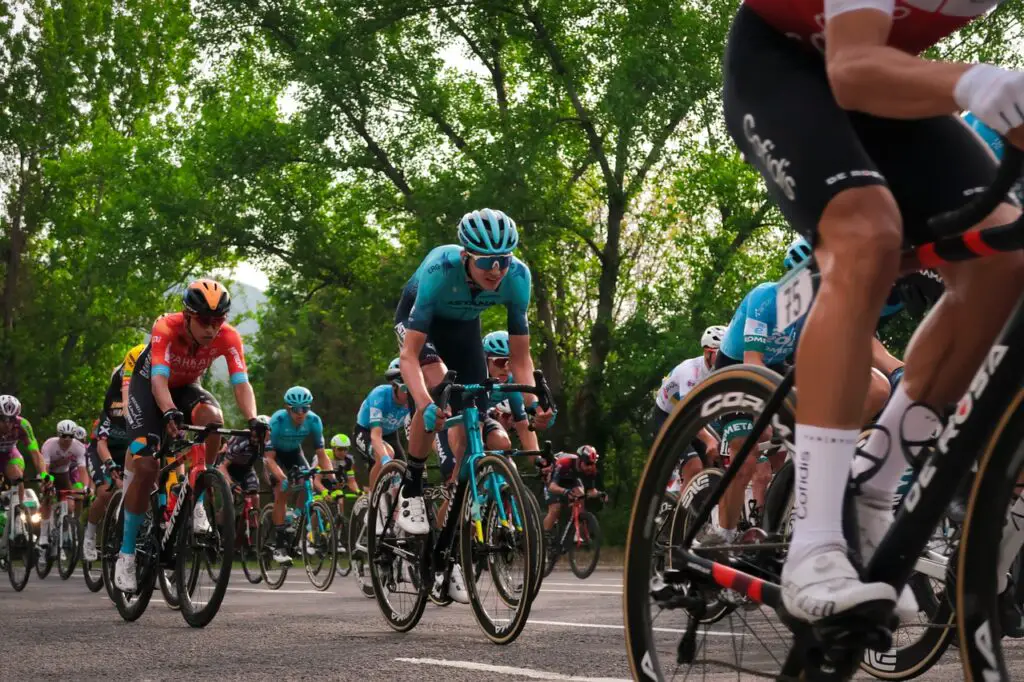A cultural phenomenon that unites Italy and captures the hearts of sports enthusiasts

For Italian sports and cycling enthusiasts, the professional bicycle race, the Giro d’Italia, holds immense cultural and national significance. This iconic 3 week long multi-stage race, often referred to as the Giro, takes Italy by storm every year with its thrilling competition, breathtaking landscapes, and rich history. It unites the nation, as Italians from all walks of life come together to celebrate their love for cycling and their country. It is an exciting spectacle for both riders and spectators alike.
The Giro d’Italia has been held annually since its first edition in 1909, except during the two Word Wars. The race was first organized in 1909 by the Italian sports newspaper, Gazzetta dello Sport, whose main purpose was to boost newspaper sales and promote cycling as a popular sport in Italy. Little did they know that this race would grow into one of the most prestigious events in the world of cycling. Today the Giro, usually held in May, stands alongside the Tour de France and the Vuelta a España as one of UCI professional cycling’s three Grand Tours.
Each year the Giro features a different route, showcasing the diverse and picturesque landscapes of Italy, with some stages sometimes taking place outside Italy in neighboring countries. The 3 week long race, comprised of 21 stages, usually has 2 rest days. This year’s event boasts 22 teams of 8 riders each, totaling 176 riders. Pro cycling is largely a team sport, with multi-million dollar corporate sponsored squads.
After each day’s stage, the rider with the lowest aggregate time is the overall race leader of the general classification and wears the maglia rosa, or pink jersey. Donning the pink jersey is a mark of distinction and a testament to a rider’s skill, strength, and consistency throughout the race. The battle for the jersey is fiercely contested amongst teams, with riders giving their all to claim this distinguished honor.
While the overall general classification gathers the most attention, single day stage wins are very prestigious. Additionally, there are other contested battles held within the Giro, namely the points classification for best sprinter, the mountains classification for the climbers, the young rider classification for best rider under age 25, and the team classification for best team.
From the snow-capped peaks of northern Italy’s Dolomite mountains to the sun-kissed coastlines of Sicily, the Giro takes cyclists on a mesmerizing, challenging, and arduous journey through the country. The 3400 km route is meticulously planned to test the endurance, skill, mental fortitude and strategic thinking of the cyclists and their teams.
The Giro often includes grueling mountain stages, where cyclists must conquer steep climbs and navigate treacherous high speed descents, and truly separates the best from the rest, crowning the rider who proves their mettle over the three-week-long race. Thousands of spectators line the race route, cheering on their favorite riders and creating an electrifying atmosphere. The streets are adorned with flags, banners, and colorful decorations, adding to the festive ambiance. Locals feel honored when the Giro passes through their towns and villages.
The Giro d’Italia is a cultural phenomenon that unites Italy and captures the hearts of sports enthusiasts across the nation. From its humble beginnings to its current status as one of the most celebrated events in the cycling world, the Giro embodies the spirit of Italian passion, determination, and love for sport, and is a testament to the power of sports to bring people together and ignite a collective sense of Italian pride.
For more info about the event visit: www.giroditalia.it/en/